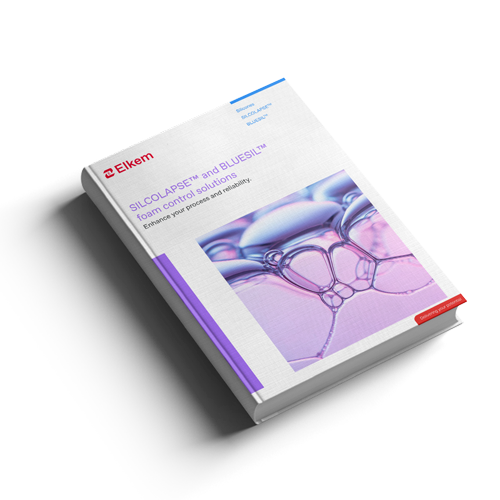- Magazine
- Energy & power
- The important role of antifoam agents in oil-gas separation and amine treating
The important role of antifoam agents in oil-gas separation and amine treating
The separation of gas from crude oil is a fundamental stage in upstream oil and gas production, and a high-performing separator vessel is crucial for productivity. Many factors can influence the separator’s performance, however. The formation of excessive foam bubbles – a phenomenon that causes problems throughout oil and gas production – is particularly significant during separation, and requires quick and effective action.
The amount and stability of the foam depends on the characteristics of the gas, its affinity with crude oil, and the pressure and temperature conditions of the system. The composition of the unrefined crude oil itself is also a key parameter, with the presence of short-chain carboxylics, phenols, asphaltenes, resins and aggregates all contributing to the generation and stabilisation of foam in crude oil.
When a thick layer of foam forms on the surface of the oil, efficient separation becomes impossible. The likelihood of liquid carryover also increases. To decrease this risk, operators can either reduce the liquid level in the separator or invest in larger, more expensive equipment. Potential damage to scrubbers and compressors further on in the process can also occur due to foamy crude oil.
To avoid all this, it makes more sense to tackle the problem of foam head on. Thanks to the high efficiency of the silicone-based antifoam solutions provided by Elkem Silicones, it only takes a small amount of antifoam to eliminate the occurrence of foam and thereby increase the productivity and safety of oil-gas separation.
“We propose polydimethylsiloxane (PDMS) oils or blends, diluted with hydrocarbons or compounds, due to their high efficiency at very low dosages compared to other technologies,” explains Franck Pochon, Elkem Silicones’ Antifoam Technical Service Manager for Europe. “The dosage is generally between 10 and 30 ppm. The products are formulated with adapted dispersibility and specific molecular weight to make them able to manage the process of separation as precisely as possible.”
High-viscosity PDMS products are typically recommended for use within separators. Elkem’s BLUESIL™ FLD 47V60 000 is one possible solution guaranteed to offer high performance and stability in the separator vessel. The product is just one example from the company’s wide range of silicone-based antifoam and defoaming agents, made possible through Elkem’s complete integration in the silicone value chain.
Controlling foam during gas sweetening
Once the gas has been successfully separated, it is transported for further processing. At this point, it is known as ‘sour gas’ due to its significantly high concentrations of hydrogen sulphide (H2S) and carbon dioxide (CO₂). Both acidic gases have a dangerous, corrosive effect on gas pipelines and reduce the commercial value of the natural gas.
Alkylamines are used to remove H2S and CO₂ in a process called gas sweetening. Amine plants consist of an absorber and a regenerator. Pure amine solvents generally have a low tendency to foam, but contamination with impurities means foaming can occur. And as with separation, operators must tackle the problem quickly. Excessive foaming decreases the efficiency of the sour gas extraction and leads to loss of amines.
To bring the foaming event under control, operators can turn once again to Elkem’s high-performance antifoam agents. “For gas sweetening, we recommend an emulsion-based product with different active content. We can propose SILCOLAPSE™ C563 and SILCOLAPSE™ 140, and we also have a new product called SILCOLPSE™ EASY 10,” explains Franck Pochon. These can be added into the absorber stream at very low dosages between 0.3 and 0.6 kilo per ton of amines.
“Elkem has been serving this industry for a very long time with a wide range of technologies and products. We are continuously innovating by listening to the needs of our customers,” says Christine Leuci, Elkem’s Specialty Fluids Global Business Development Manager.
She adds that the company is also highly focused on improving its carbon footprint, with a long-term goal of reaching net zero emissions by 2050. The high efficiency and good toxicology profiles of its antifoam products are all part of its commitment to offering environmentally friendly solutions that facilitate safer and more sustainable oil and gas production.
